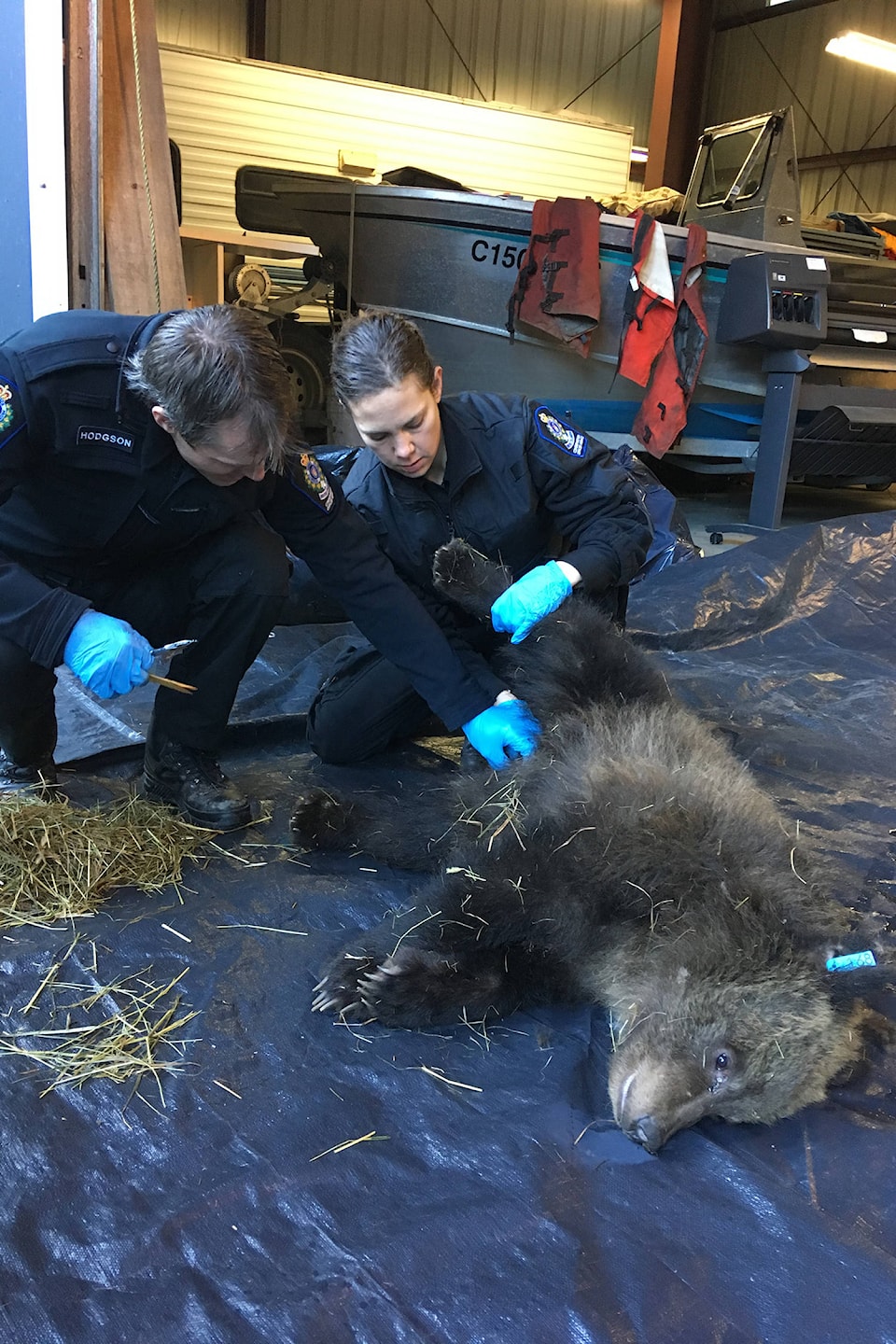Three grizzly cubs of the year have been relocated to the Northern Lights Wildlife Society’s rehabilitation centre after their mother was destroyed earlier this month.
The sow had entered a side portion of a residence and accessed a freezer, consuming a large amount of frozen food. When the homeowner attempted to scare the sow away she exhibited aggressive behaviour. She continued to act aggressively when the COS responded.
“The COS had no reports of the sow accessing attractants on-site or of it hanging around the property before the break-in. Bears entering inhabited structures and feeding and then acting aggressive toward people is a very strong indicator of food conditioning and habituation combined,” said local CO Hana Anderson. “It would be rare for a bear to go from eating all natural foods away from people to breaking into a home without habituation and food conditioning. It’s highly likely this bear had been elsewhere in close proximity to people accessing unsecured food near homes for some time.”
Anderson said the sow was destroyed for public safety. Two of the cubs were immobilized by a dart gun on site and a third cub was trapped in a culvert trap about 24 hours later before being picked up by the Northern Lights Wildlife Society.
The B.C. Government (the first government in the world) signed an agreement with the Northern Lights Wildlife Society and IFAW (International Fund for Animal Welfare) in 2007 to consider orphaned grizzly bear cubs for a pilot rehabilitation program.
There have already been several grizzly bear cubs from Bella Coola rehabilitated through Northern Lights, part of 21 the society has rehabbed in total. Manager Angelika Langen said the latest Bella Coola cubs are still settling in after the long journey.
“They are still in some shock and are only coming out at night to feed,” she said. “At first they went totally wild when they realized they were confined - they didn’t like the fences - but once they discovered the den they settled in much better.”
Langen said that in addition to the three Bella Coola grizzlies, the centre also has 26 black bear cubs. The two species are kept in separate enclosures and human exposure is limited.
“Peter is the only person that feeds the animals,” Langen explained. “In the same way a mother bear teaches her cubs to avoid other bears, Peter teaches the bears to avoid other humans.”
Langen said that the bears are not permitted to hibernate over the winter so that they keep growing; this enables them to reach the size of a two year-old a year earlier.
It also betters their chances of survival upon release as they no longer have a mother to care for them; normally a sow will care for her cubs until they are least two or three years old.
“It shaves off a year of human exposure for the bears,” Langed said. “Once they are released they are much larger than they would have been if they had been hibernating for the season.”
Langen said that the Bella Coola cubs will be released in the spring. They are radio-collared, ear tagged and mirco-chipped so that the society can track them into the future. Langen said the radio collars are designed to fall off after one year, but provide valuable information about the bears until that time.
“We released our first grizzly bear cubs in 2008. Since then we have released a total of 21 cubs and have had no issues with these bears whatsoever,” said Langen. “These cubs will be returned to the Bella Coola area, but not in the Valley. They will be helicoptered out into a remote area.”
Anderson said that the message from the COS once again is to secure attractants to ensure bears cannot feed on human-associated food near residential areas.
“If you allow bears to feed on human associated food near your home you’re not only increasing the likelihood that a bear breaks into your home, you’re increasing the risk it will break into one of your neighbours’ homes,” she said. “Securing food attractants near people has always been the simplest way to increase public safety for everyone in the community.”
